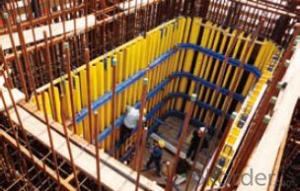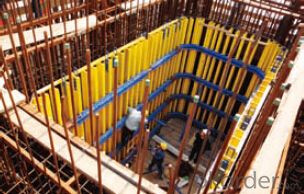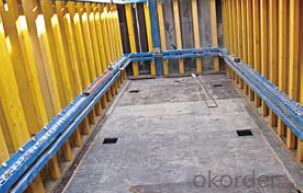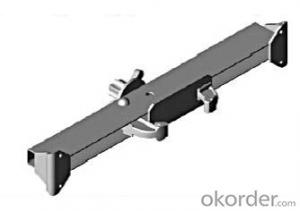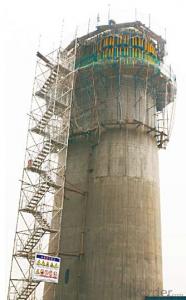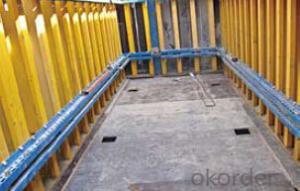Shaft-platform System for Formwork and Scaffolding
- Loading Port:
- Tianjin
- Payment Terms:
- TT OR LC
- Min Order Qty:
- 50 m²
- Supply Capability:
- 1000 m²/month
OKorder Service Pledge
Quality Product, Order Online Tracking, Timely Delivery
OKorder Financial Service
Credit Rating, Credit Services, Credit Purchasing
You Might Also Like
Shaft Platform
As operating platform, the shaft platform is mainly used in the concrete pouring of elevator shaft,
equipment shaft, stair shaft of high-rise building and so on.
Characteristics:
◆ The length of shaft beam is adjustable.
◆ Flexible structure makes lifting easier.
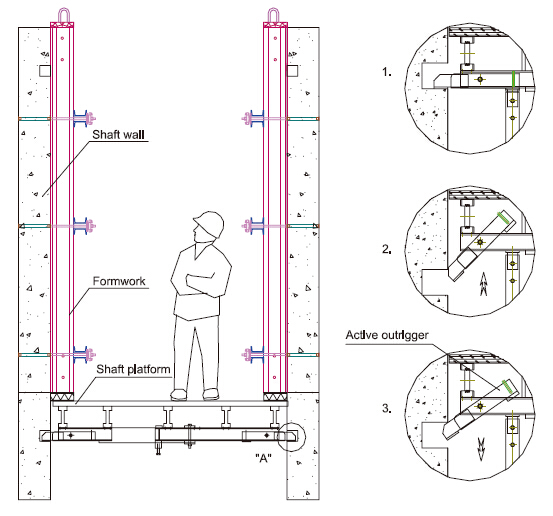
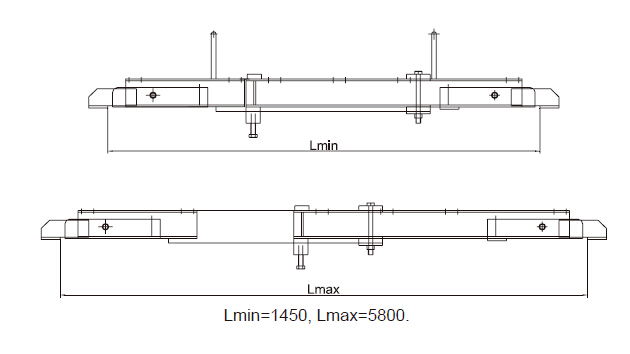
- Q: What are the different finishes available for steel formwork?
- The final product's desired appearance and functionality determine the available finishes for steel formwork. Some common finishes include: 1. Smooth finish: This basic option involves leaving the steel formwork untreated, resulting in a clean and simple appearance. However, it may not be suitable for applications that require increased durability or corrosion resistance. 2. Galvanized finish: Steel formwork can be hot-dip galvanized, which coats the surface with a layer of zinc. This finish offers excellent corrosion resistance, making it suitable for outdoor applications or structures exposed to moisture. 3. Powder coating: Powder coating is a popular option for steel formwork. It entails applying a dry powder to the surface and baking it in an oven to achieve a durable and attractive finish. It provides excellent corrosion resistance and can be customized in terms of color and texture. 4. Epoxy coating: Industrial settings often use epoxy coatings that provide chemical resistance. These coatings create a protective layer on the steel formwork, making it resistant to chemicals, abrasion, and moisture. They can also be customized with different colors and textures. 5. Paint finish: Steel formwork can be painted with enamel or latex paints to achieve the desired appearance. Paint finishes offer some level of corrosion resistance, although they may not be as durable as other options. When selecting a finish for steel formwork, it is crucial to consider project-specific requirements and conditions. Factors such as intended use, exposure to elements, and aesthetic preferences should be taken into account to ensure the desired outcome.
- Q: How does steel formwork perform in high-temperature conditions?
- Steel formwork performs well in high-temperature conditions due to its inherent strength and heat resistance properties. Steel is known for its high melting point and can withstand high temperatures without losing its structural integrity. This makes it an ideal choice for construction projects that are exposed to extreme heat or fire hazards. In high-temperature conditions, steel formwork maintains its shape and stability, ensuring that the concrete structure being formed remains intact. It does not warp, deform, or weaken under the influence of heat, providing a reliable and safe solution for concrete formwork. Moreover, steel formwork has excellent thermal conductivity, allowing it to dissipate heat efficiently. This prevents the build-up of excessive heat within the formwork, minimizing the risk of thermal expansion or damage to the concrete during curing. Additionally, steel formwork is highly durable and can withstand prolonged exposure to high temperatures without deterioration. It is resistant to corrosion, which further enhances its performance in high-temperature environments. This durability ensures that steel formwork can be reused multiple times, making it a cost-effective and sustainable option for construction projects. Overall, steel formwork is a reliable and efficient choice for high-temperature conditions. Its strength, heat resistance, and durability make it an ideal solution for concrete formwork, providing a stable and secure platform for construction activities even in extreme heat.
- Q: How does steel formwork affect the overall energy efficiency of the structure?
- Steel formwork can have a significant impact on the overall energy efficiency of a structure. One of the main benefits of using steel formwork is its ability to provide a high level of thermal insulation. Steel has a low thermal conductivity, meaning it does not easily transfer heat. This property helps to minimize heat loss or gain through the walls, floors, and ceilings of the structure. By using steel formwork, the building envelope can be better sealed, reducing air infiltration and improving the overall airtightness of the structure. This prevents unwanted air leakage, which can lead to energy loss and reduced energy efficiency. Steel formwork also allows for better control of moisture and humidity levels, which is crucial for maintaining a comfortable indoor environment and preventing mold or moisture-related issues. Additionally, steel formwork provides a durable and long-lasting construction solution. It can withstand extreme weather conditions, seismic activities, and other external forces, ensuring the structural integrity of the building for many years. This durability reduces the need for frequent repairs or replacements, which can save energy and resources in the long run. Furthermore, steel formwork is a sustainable choice as it is often made from recycled materials and is itself recyclable at the end of its lifespan. The use of recycled steel reduces the carbon footprint associated with construction and helps conserve natural resources. The recyclability of steel formwork also means that it can be repurposed or reused in future projects, further reducing waste and environmental impact. In summary, steel formwork positively affects the overall energy efficiency of a structure by providing excellent thermal insulation, improved airtightness, moisture control, durability, and sustainability. By choosing steel formwork, builders can create energy-efficient buildings that are environmentally friendly and cost-effective in the long term.
- Q: Can steel formwork withstand extreme weather conditions?
- Yes, steel formwork is designed to withstand extreme weather conditions. Steel is known for its strength and durability, making it highly resistant to harsh weather elements such as heavy rain, strong winds, and high temperatures. Additionally, steel formwork is often treated with protective coatings to further enhance its resistance to corrosion and degradation caused by extreme weather conditions.
- Q: Can steel formwork be used for both horizontal and vertical structures?
- Yes, steel formwork can be used for both horizontal and vertical structures. Steel formwork is a versatile construction material that can be easily adjusted and reused, making it suitable for various types of structures. It provides excellent strength and stability, making it ideal for supporting heavy concrete loads in both horizontal and vertical applications. Steel formwork systems can be customized and assembled to meet the specific requirements of different construction projects, allowing for efficient and precise construction of both horizontal slabs and vertical walls. Its durability and resistance to wear and tear make it a reliable choice for long-term use in various construction applications.
- Q: What are the different accessories required for steel formwork maintenance?
- Some of the different accessories required for steel formwork maintenance include formwork release agents, cleaning solutions, wire brushes, repair materials such as epoxy or cementitious grout, lubricants for hinges and pins, and protective coatings for corrosion prevention. Additionally, tools such as hammers, wrenches, and pliers may be needed for minor repairs or adjustments.
- Q: How does steel formwork contribute to the speed of construction?
- Steel formwork contributes to the speed of construction by providing a durable and reusable framework for casting concrete. Its strength and stability allow for faster and more efficient construction processes, as it can withstand the pressure of fresh concrete and can be easily assembled and dismantled. Additionally, steel formwork eliminates the need for traditional timber formwork, reducing construction time and costs associated with material procurement and labor-intensive tasks like cutting and shaping.
- Q: Can steel formwork be used for precast concrete walls?
- Yes, steel formwork can be used for precast concrete walls. Steel formwork provides strength, durability, and stability, making it suitable for creating high-quality precast concrete walls. Its versatility allows for a wide range of designs and shapes, making it a popular choice in the construction industry.
- Q: What are the common safety training requirements for steel formwork installation?
- The common safety training requirements for steel formwork installation involve several key aspects to ensure the safety of workers and the successful completion of the project. These requirements may vary depending on the specific regulations and standards set by the local authorities and the company's policies. However, some of the common safety training requirements for steel formwork installation include: 1. General Construction Safety Training: All workers involved in steel formwork installation should receive general construction safety training, which covers topics such as hazard identification, personal protective equipment (PPE) usage, emergency procedures, and safe work practices. This training ensures that workers have a basic understanding of construction site safety. 2. Fall Protection Training: Given that steel formwork installation often involves working at heights, fall protection training is crucial. Workers should be trained on the proper use and inspection of fall protection equipment, such as harnesses, lanyards, and anchor points. They should also learn how to set up and dismantle temporary fall protection systems like guardrails and safety nets. 3. Material Handling and Lifting Training: Steel formwork components can be heavy and require proper lifting techniques to avoid injuries. Workers should receive training in safe lifting practices, including correct body mechanics, proper use of lifting equipment such as cranes or forklifts, and understanding load capacities. 4. Scaffold Safety Training: Steel formwork installation often involves the use of scaffolding to access higher areas. Workers should be trained on safe scaffold erection, inspection, and usage. This includes knowledge of scaffold components, stability, fall protection on scaffolds, and safe practices for working on scaffolds. 5. Electrical Safety Training: Steel formwork installation may involve working near electrical systems or equipment. Workers should receive training on electrical safety, including identifying electrical hazards, using lockout/tagout procedures, and understanding safe distances from power lines. 6. Hazard Communication Training: Workers should undergo training on hazard communication protocols, including the identification and understanding of safety data sheets (SDS) and proper handling of hazardous materials commonly used in steel formwork installation. 7. First Aid and CPR Training: In the event of an accident or injury on the job site, workers should be trained in basic first aid and cardiopulmonary resuscitation (CPR) techniques. This training can help stabilize an injured worker until professional medical help arrives. It is important for employers to ensure that all workers receive comprehensive safety training before commencing steel formwork installation. Regular refresher courses and ongoing safety awareness programs should also be conducted to reinforce safe work practices and maintain a high level of safety on the job site.
- Q: How does steel formwork handle architectural features such as openings and recesses?
- Steel formwork is a highly versatile and customizable solution that can easily handle architectural features such as openings and recesses. With its strength and flexibility, steel formwork can be shaped and adjusted to accommodate various shapes and dimensions, ensuring a precise fit. This allows for the creation of openings, recesses, or any other architectural feature required in the construction process. Additionally, steel formwork can be easily dismantled and reused, making it a cost-effective and efficient choice for handling complex architectural designs.
Send your message to us
Shaft-platform System for Formwork and Scaffolding
- Loading Port:
- Tianjin
- Payment Terms:
- TT OR LC
- Min Order Qty:
- 50 m²
- Supply Capability:
- 1000 m²/month
OKorder Service Pledge
Quality Product, Order Online Tracking, Timely Delivery
OKorder Financial Service
Credit Rating, Credit Services, Credit Purchasing
Similar products
Hot products
Hot Searches
Related keywords
